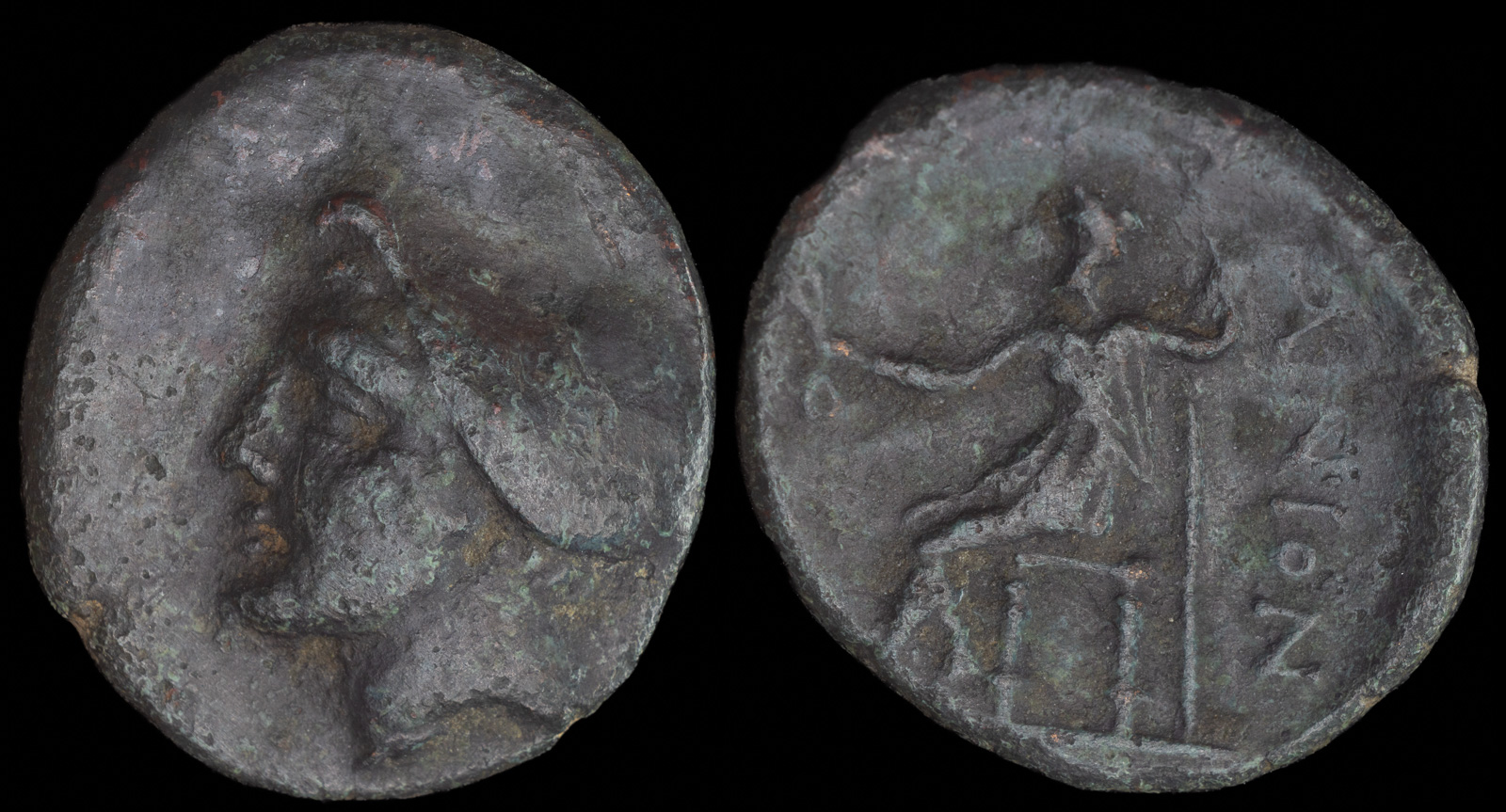
Thrace, Ainos
c. 280-200 BCE
Æ 18mm, 5.12g, 3h
Head of Hermes l., wearing laureate petasos.
R/ Kerykeion.
AMNG II 392; HGC 3.2, 1289
According to myth, Ainos was founded by Aeneus, of the Aeneid and Trojan War fame. Although Virgil gives Aeneus founding rights, Homer himself listed that Peirous came from Ainos. Clearly the city has a long history.
Prior myths attribute the city’s founding to a different Aeneus, who was a son of Apollo and the father of Kyzikos, who himself founded the city of the same name. Various other historians state that settlers of Alopekonessos, of Aeolis, of Mytilene, or of Cumae were responsible.

Thrace, Ainos
after 323 BCE
Æ 18,5mm, 4.20g
Head of Hermes left, wearing petasos.
R/ Hermes seated left on throne, holding purse and scepter.
SNG Copenhagen 421; BMC 42
After the death of Alexander the Great, Ainos was ruled by Lysimachos. After his defeat it became the property of the Seleukids. Just to make sure everyone had a try, the Ptolemies took it in 246 BCE, followed by Philip V of Macedon, and then back to the Seleukids before the Romans settled the matter once and for all.
A Venetian castle now sits where the acropolis used to be.
The Battle of Sphacteria between Athens and Sparta is fought at the entrance to the Bay of Pylos, resulting in an Athenian victory. Ainos, Imbros, and the cities of Lemnos (Myrina, Hephaistia) provide support.
Lysimachos defeated at the Battle of Coropedion. Adramytteion, Ainos, and Abydos come under control of the Seleukid Empire. Ephesos returns to its original name.
Ainos is declared a free city by the Romans.